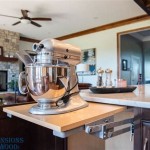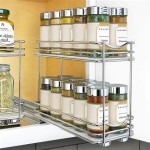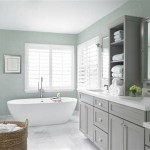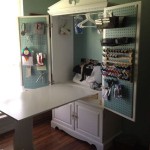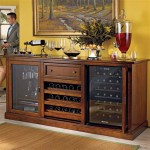How Difficult Is It To Paint Kitchen Cabinets?
Painting kitchen cabinets can dramatically transform a kitchen's appearance without the expense of a full remodel. However, the perceived simplicity can be deceiving. The project requires significant preparation and a methodical approach for a professional-looking finish. This article explores the various factors that contribute to the difficulty of painting kitchen cabinets.
Factors Influencing Difficulty
Several factors influence the overall complexity of a cabinet painting project. These include the current cabinet condition, the chosen paint type, and the desired finish quality. Each factor introduces a unique set of challenges that impact the time, skill, and effort required for successful completion.
Cabinet Condition and Preparation
Existing cabinet condition plays a crucial role in the project's difficulty. Cabinets with intricate detailing or ornate carvings require more meticulous preparation and painting. Older cabinets might have layers of built-up grime, grease, and possibly lead-based paint, demanding thorough cleaning and potentially professional removal of hazardous materials. Any existing damage, such as water stains, scratches, or dents, will need addressing before painting commences.
Paint Selection and Finish
The chosen paint type significantly impacts the ease of application and the final appearance. Oil-based paints offer a durable finish and level well but require longer drying times and specialized cleaning solvents. Water-based paints, like latex and acrylic, dry quickly and clean up easily but might require more coats for even coverage. The desired finish also contributes to the complexity. High-gloss finishes highlight imperfections, necessitating flawless preparation and application. Satin or matte finishes are more forgiving but can be susceptible to showing fingerprints and smudges.
Skill Level and Experience
A painter's skill and experience directly affect the project's outcome and perceived difficulty. Experience with surface preparation, priming, and applying even coats of paint significantly reduces the likelihood of mistakes. Understanding the nuances of different paint types and finishes is essential for achieving a professional result. Novices might find the process more challenging and time-consuming, while experienced DIYers or professional painters will likely find it less daunting.
Time Commitment and Disruption
Painting kitchen cabinets is not a quick project. Proper preparation, including cleaning, sanding, priming, and multiple coats of paint, requires significant time. Additionally, the kitchen will be unusable during the painting process, requiring alternative meal preparation arrangements. The total time commitment and kitchen disruption should be considered when assessing the project's feasibility.
Necessary Tools and Materials
Gathering the necessary tools and materials contributes to the overall project complexity. Essential items include sandpaper, primer, paint, brushes, rollers, painter's tape, drop cloths, and cleaning supplies. Specialized tools, such as a paint sprayer, can simplify the application process but require additional investment and learning. Ensuring access to all required tools and materials before starting streamlines the process and prevents delays.
Cost Considerations
While generally less expensive than replacing cabinets, painting still involves costs. The price of paint, primer, tools, and other materials can vary depending on quality and quantity. If professional assistance is sought for preparation or painting, labor costs significantly increase the overall project expense. Accurately estimating the total cost helps determine the project's practicality compared to other renovation options.
Potential Challenges and Troubleshooting
Several potential challenges can arise during the cabinet painting process. Uneven paint coverage, drips, brushstrokes, and bubbling are common issues that require troubleshooting and corrective action. Proper surface preparation and careful paint application techniques can minimize these problems. Understanding how to address common painting issues ensures a smooth and successful outcome.
Alternatives to DIY Painting
For those hesitant to undertake the project themselves, several alternatives exist. Professional painting services offer expertise and efficiency, albeit at a higher cost. Refacing cabinets involves replacing the cabinet doors and drawer fronts while leaving the cabinet boxes intact, providing a cost-effective update. Ultimately, the best approach depends on individual budgets, skill levels, and desired results.
Mitigating Difficulty
Several strategies can mitigate the perceived difficulty of painting kitchen cabinets. Thorough planning, including selecting the right paint and tools, and meticulous surface preparation are crucial. Breaking the project down into smaller, manageable steps simplifies the process and prevents overwhelm. Practicing painting techniques on a less visible area helps improve skill and confidence before tackling the main cabinet surfaces.

Avoid These Mistakes How To Paint Cabinets That Are Already Painted Grace In My Space

How To Paint Kitchen Cabinets The Love Notes Blog

Painted Kitchen Cabinets One Year Later The Palette Muse

How To Paint Kitchen Cabinets In 7 Simple Steps

Diy Painting Your Kitchen Cabinets The Right Way

How To Prep And Paint Kitchen Cabinets Lowe S

How To Paint Kitchen Cabinets

How To Paint Kitchen Cabinets Forbes Home

How To Repaint Kitchen Cabinets Painted By Kayla Payne

How To Paint Kitchen Cabinets A Step By Guide Confessions Of Serial Do It Yourselfer



